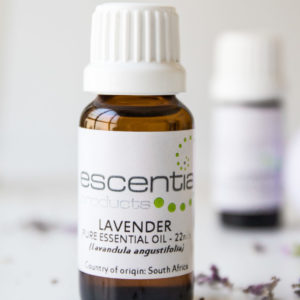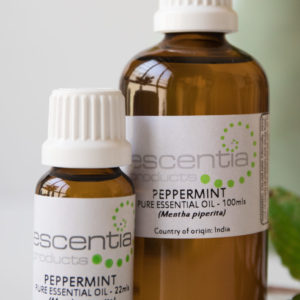Escentia – Myrrh Essential Oil 11ml
R248.94
- Commiphora Myrrha. Family Burseraceae.
- The different species of Commiphora and their distribution are steeped in history. Myrrh is obtained from many species of this shrub, the main types being C Longipedicellia, C Terebenthina, C Monoica, C Corrugata and C Africana.
2 in stock
Description
Myrrh essential oil
-
Botanical (and family):
Commiphora Myrrha. Family Burseraceae.
The different species of Commiphora and their distribution are steeped in history. Myrrh is obtained from many species of this shrub, the main types being C Longipedicellia, C Terebenthina, C Monoica, C Corrugata and C Africana. - Distribution:
They are grown over an arc, from East Africa to Arabia and across to India. A good deal of Myrrh originates in Somalia and Ethiopia. - Description of plant:
A tough shrub, having very spiny branches and twigs. The leaves grow in small tufts and consist of three leaflets up to 2cm long. The flowers have short stalks and are white to light green. They produce a fruit 1cm in diameter. -
Extraction:
Steam distillation of the crude myrrh. The oleo-gum-resin fills natural fissures in the bark, or exudes as a result of damage caused either by animals chewing the bark, or by deliberate incisions. The crude resin is divided primarily into Heerobol and Bisabol types. The first is reddish-brown and covered with a fine powder, the latter being softer, and a deep yellow colour.
-
Charactersitics:
The oil can range from pale yellow to greenish or orange-brown, fairly thick, and becoming sticky with age. It is one of the few essential oils whose fragrance improves with time. It is warm-spicy, with peculiar pungent balsamic “lift”, which mellows to a ‘warmer’ character as the oil ages.
BASE NOTE - Odour effects:
Cooling and drying. - Cautions:
Avoid during pregnancy. -
Main chemical constituents:
Myrrholic ester – 1%
2-butanal – 2%
Methyl iso butyl ketone, curzeronone – 6%
Elemene, heerabolene, cadinene, copaene, curzerene, lindestrene – 39%
Myrrholic acid – 1%
Cinnamaldehyde, cuminaldehyde – 1%
Limonene, dipentene, pinene – 1%
Myrrh alcohols – 36%
2-methyl – 5 – isopropenylfuran – 4%
Eugenol – 3% -
Properties and indications:
MIND:
Helpful with apathy and lack of incentive. Has a cooling effect on emotions.
BODY:
Well known ‘drying’ action against excessive mucous in the lungs. Powerful against bronchitis, colds, sore throats, catarrh, pharyngitis. Could help with glandular fever. Excellent for mouth and gum disorders. A tonic to the stomach, stimulating appetite, stemming diarrhoea, easing flatulence, acidity and piles. Of great benefit for scanty periods, leucorrhea and thrush. Said to stimulate white blood corpuscles. Has a direct anti-microbe effect.
SKIN:
Powerful skin preservative qualities, with a cooling action that could reduce boils, skin ulcers, sores and weeping and chapped wounds. - Other uses:
Pharmaceutical products, gargles, toothpaste, dentistry, and as a fixative. Used in perfumery for heavy florals and oriental notes. - Blends well with:
- Benzoin, Clove, Frankincense, Galbanum, Lavender, Patchouli, Sandalwood.




